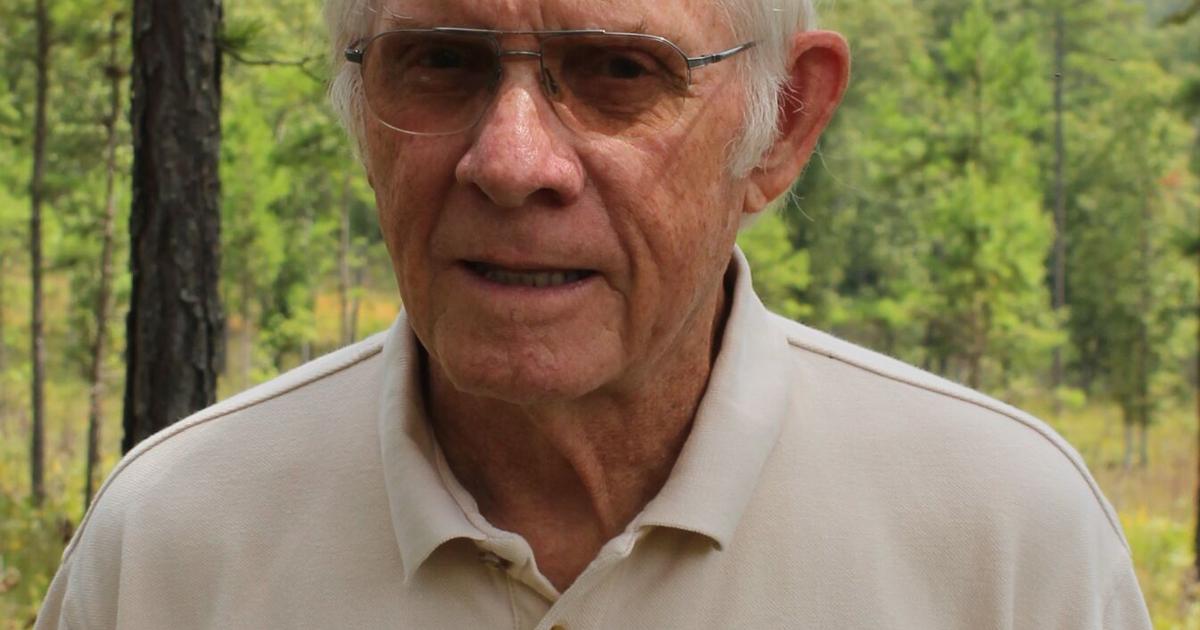
#inform-video-player-1 .inform-embed { margin-top: 10px; margin-bottom: 20px; }
#inform-video-player-2 .inform-embed { margin-top: 10px; margin-bottom: 20px; }
Influential conservationist Clarence Coffey of Crossville was honored with the 2024 Robert Sparks Walker Lifetime Achievement Award, part of the Governor’s Environmental Stewardship Awards administered by the Tennessee Department of Environment and Conservation (TDEC).
The award was presented in October at the annual awards luncheon at the Franklin Marriott.
“Clarence Coffey embodies the spirit of conservation,” said TDEC Commissioner David Salyers. “He not only recognizes steps necessary to protect our natural resources but has been an innovator in how to address big problems. Our state has benefited greatly from his long career of work.”
Coffey’s work has influenced methods in conservation now recognized by leading experts in multiple fields of study. In a long career spanning many titles and accomplishments, Coffey is known most for creating a prescribed fire as a solution to a massive outbreak of the Southern Pine Beetle that killed pine trees across the Southeast in the early 2000s. The beetle took its toll on a large stand of old growth shortleaf pine trees, including a large stand of trees at the Catoosa Wildlife Management Area.
At Coffey’s urging, the Tennessee Wildlife Resources Agency implemented a prescribed fire in salvaged areas of the Catoosa WMA, an October action that became known as the Halloween Burn, resulting in a surge of native grasses and wildflowers emerging not long after the fire.
The response became an awakening about the need to thin a forest canopy and apply fire to the landscape, a practice Catoosa managers have repeated. Within a few years, lots of shortleaf pine reproduction, native grasses and herbaceous layer emerged. The strategy created awareness of the need to use Coffey’s approach throughout the Southeast.
Coffey collaborated with Gary Myers, then TWRA director, in the acquisition of 4,000 acres from the Bridgestone Firestone Corporation in White and Van Buren counties that became the Big Bottom Wildlife Management Area, north of Fall Creek Falls State Park.
From an early age, Coffey roamed the rivers and “hollers” of Roane County, where he was raised. His love of the nature led him to Tennessee Technological University, where he obtained an agricultural bachelor’s degree. Shortly after graduating, the Tennessee Game and Fish Commission hired him to work as a wildlife officer in Carroll County.
After a reorganization of the commission in 1974 into the Tennessee Wildlife Resources Agency, Coffey became assistant law enforcement supervisor over southeastern Tennessee. He later became information and education specialist in TWRA’s Region 3 office in Crossville.
In the mid-80s, Coffey advocated for active, professional forest management on TWRA wildlife management areas, and in 1984 with urging from him and others, TWRA implemented a forest management initiative at the Catoosa WMA in Cumberland County. Coffey became assistant regional manager in 1994, and in a few years his forest management skills led to the Halloween Burn.
Coffey became part of academic endeavors — inside and outside Tennessee — on topics surrounding restoration of native ecosystems, grasslands and shortleaf pine throughout the Southeast.
Although retired from TWRA, Coffey’s outreach continued to foster significant interest in shortleaf pine ecosystems and the forgotten grasslands of the Southeast, which harbor many of the most endangered plants and animals in the country.
In 2008, Coffey met Dr. Dwayne Estes, a professor at Austin Peay State University, at a Natural Areas Association conference in Nashville. Estes learned from Coffey and saw the need for a larger collaborative effort to research and restore Southeastern grasslands, the most imperiled ecosystems in eastern North America, which harbor many of the most endangered plants and animals in the country. Estes launched the Southeastern Grasslands Institute (SGI), a collaboration of leaders in international biodiversity conservation.
The first interagency and interstate meeting on range-wide shortleaf pine restoration was held in 2010 in North Carolina. Forest managers from federal and state agencies and other organizations met to discuss the future of the rapidly declining species. The Shortleaf Pine Initiative came from it, a multi-agency, multi-organizational collaboration across 22 states. The United States Forest Service contracted Coffey to travel throughout the historic range to speak at landowner meetings and lead field trips.
Coffey is a booster and expert who reaches out to all potential stakeholders, spreading the word, and catalyzing cooperation and progress in conservation. Conservationists are fortunate to have his friendship and leadership.
Naturalist Robert Sparks Walker, namesake of the award, was founder of the Chattanooga Audubon Society. He turned his childhood home and surrounding farmland into a wildlife sanctuary. Among his many writings, he published “Torchlights to the Cherokees: The Brainerd Mission” in 1931, gaining a nomination for the Pulitzer Prize. Walker was editor of the magazine The Southern Fruit Grower and wrote a weekly column in the Chattanooga Times. He died in 1960 at age 82.
#inform-video-player-3 .inform-embed { margin-top: 10px; margin-bottom: 20px; }
